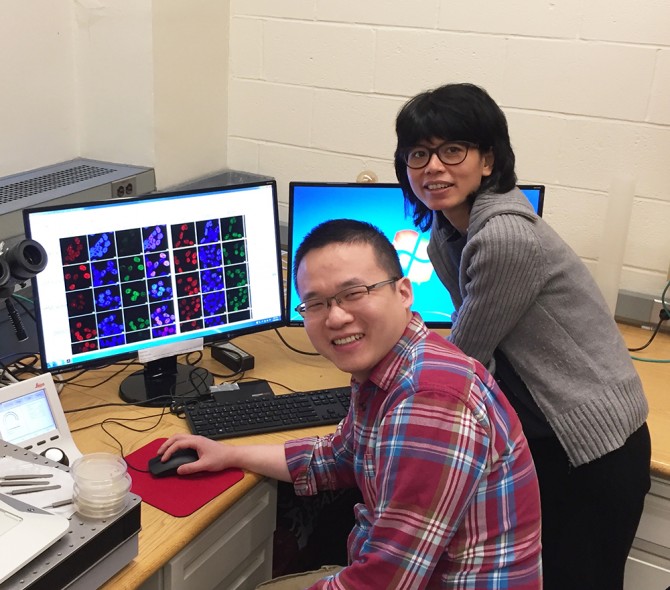Aye Lab takes its protein-assessing tool to the next level
By Tom Fleischman
In 2016, Yimon Aye, Howard Milstein Faculty Fellow and assistant professor in the Department of Chemistry and Chemical Biology, introduced the world to “T-REX” – a chemical method for targeting and modulating single proteins to analyze and screen for specific oxidation-reduction (redox) events, which are vital to many basic functions of life.
But while T-REX has unlocked previously inaccessible information related to cellular communication and modification, it has its limitations – primarily, that the targeted protein has to be selected in advance and tagged, and only one target can be explored at a time.
To solve that problem – in effect, to cast a net instead of a hook – the Aye Lab has devised a new platform that can screen for protein targets, suitable for drug delivery, at the whole-genome scale. The lab has dubbed this method “G-REX,” and it is already producing interesting results.
Postdoctoral researcher Yi Zhao is lead author of “Ube2V2 Is a Rosetta Stone Bridging Redox and Ubiquitin Codes, Coordinating DNA Damage Responses,” published Jan. 17 in ACS Central Science, a publication of the American Chemical Society.
Other contributors included postdoc Marcus J.C. Long, former undergraduate lab member Yiran Wang ’16, and Sheng Zhang, director of the Cornell Proteomics Facility.
Cells employ “first-responding” proteins that intercept potentially damaging reactive electrophilic signals (RES) and decode them for downstream proteins. These first responders, and the proteins and pathways they control, are prime targets for precision pharmaceuticals – but identifying first responders has been a challenge.
G-REX “opens up the playing field,” Aye said, allowing effectively limitless mining for these first-responding sensor proteins in a novel and ingenious way.
Instead of needing to tag a protein of interest and then monitor its response to controlled chemical perturbation, the Aye group’s new method involves controlled release of a reactive chemical in vivo, on a genome-wide scale.
The chemical release is quick and a minimal dose is delivered, meaning that only the most sensitive of potential target proteins will react to it at low levels. After identifying the reacting proteins, T-REX can then be employed to gain further insights into the roles the protein plays and its potential for answering difficult questions, such as precise responses to drug–protein “target engagement.”
“We would profile, in a direct way, these innate sensors that could be potentially druggable,” said Aye, who also has an appointment at Weill Cornell Medicine as assistant professor in the Department of Biochemistry. “And then once we have the top targets, we can immediately feed that big data back to individual precise interrogations, using T-REX. There is no other way out there to directly mine for these sensors.”
With G-REX, Aye was able to identify two related proteins – Ube2V1 and Ube2V2 – that share unique sensory capabilities but triggered responses specific to each protein. Further, the technique showed that Ube2V2-sensing-specific signaling triggers the DNA damage response in cells and larval fish, providing a new electrophilic drug-responsive approach to genome protection at the whole-organism level.
Another benefit to this approach: Targets that G-REX unearths feature regulatory proteins instead of enzymes, which catalyze all sorts of reactions, good and bad. Aye said many of the targets for drug therapy are enzymes, meaning that the drugs affect healthy cells as well as diseased ones.
“It’s a really fundamental problem in cancer drug design – how to differentiate targeting proteins in bad cells while not affecting the healthy cells,” she said.
G-REX is being filed for provisional patent protection through the Cornell Center for Technology Licensing.
This research made use of the zebrafish facility and the Cornell Imaging Center, both supported by the National Institutes of Health (NIH). Additional support came from Aye’s Beckman Young Investigator, NIH New Innovator, National Science Foundation Early Career, and Office of Naval Research Young Investigator awards.
Media Contact
Get Cornell news delivered right to your inbox.
Subscribe

